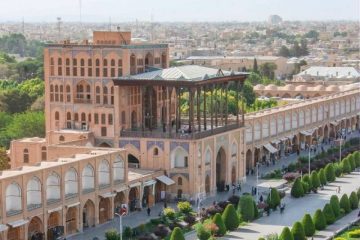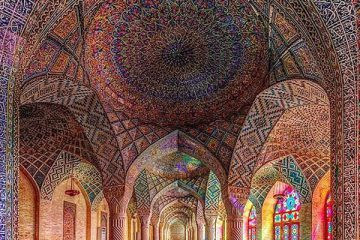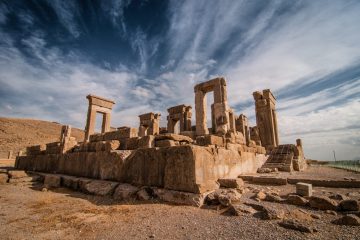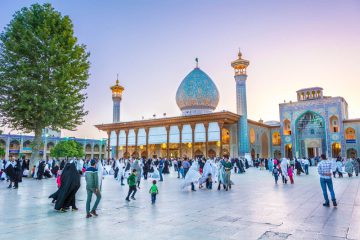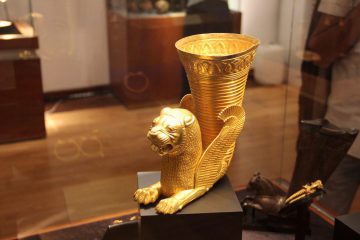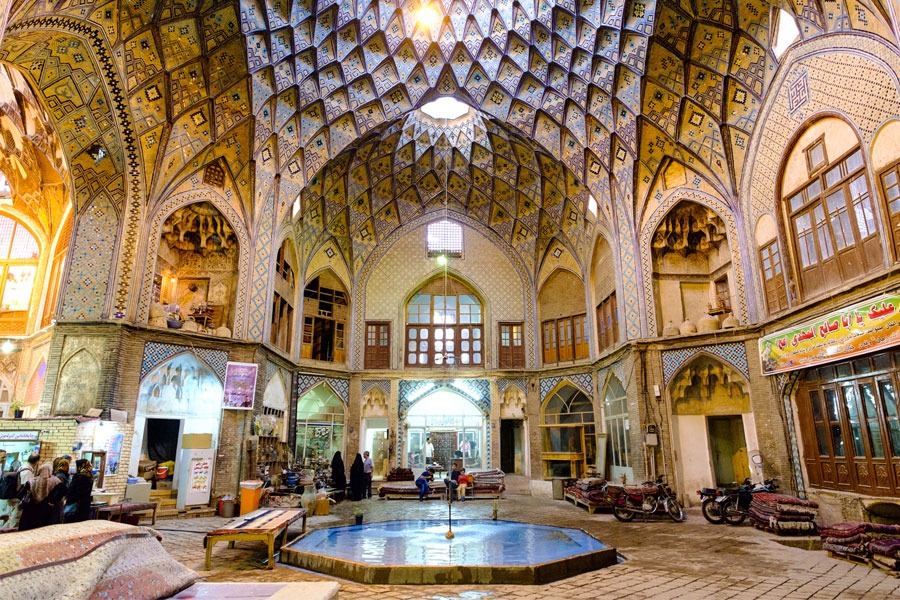
Kashan: THE CITY OF EXQUISITE HOUSES
Few Iranian cities generate as much civic pride as Kashan. This city is the epitome of everything that is typically Persian, form its mosques, carvanserais and stately gardens, to its carpets, ceramics and delicate textiles. Kashan has never been the capital, but in no period did it lake anything in comparison to the major cities of the country.
Many derivations have been suggested for the town’s name. One of these, perhaps the most revertible, claims that the town’s name. One of these, perhaps the most veritable, claims that the town was called Kashan after Kasi, or their plural Kasian – an ancient tribe who inhabited this territory in the second half of the 2nd millennium B.C. Another explain the origin of the name as derived from Kaseh (“bowl”), maintaining that Kashan looks like a bowl between the mountains and the desert. Still other asserts that this name derives from Kashaneh (“a house”). One more popular explanation is that this name originates from Keyashian (“the place of king”). Although many arguments have been presented on behalf of each of these derivations, none can be considered irrefutable.
Here are the must-see places in Kashan:
Boroujerdiha House
The home originally consisted of two sections, an “andaruni” (private part of a traditional home where only immediate family are welcome) and a “biruni” (outer part of a traditional home where guests are entertained) but today only the latter is open to the public. Ornately decorated the courtyard is laid out around a central fountain pool that sits well below ground level to help reduce the ambient temperature. At its far end is a two-story “Ivan” (open reception hall opening onto the courtyard) that is sumptuously decorated with splendid motifs above the entrance, intricate “muqarnas” (stalactite-type stone carving used to decorate doorways and window recesses) and fine glass and mirror work. Among the many delightful details to look out for is a samovar enshrined in the plaster work in honor of the owner, a medallion carpet of stucco in one of the adjoining rooms, and a man appearing to leap above a bridge following his two donkeys in an alcove painting. Finding exactly where each of these treasures is located is part of the fun of enjoying this wonderful building.
Hammam-e- Sultan Mir Ahmad
This hammam is a superb example of an Iranian bathhouse. A recent renovation has stripped away 17 layers of plaster (note the wall inside the second room) to reveal the original “sarough”, a type of plaster made of milk, egg white, soy flour and lime that is said to be stronger than cement. Richly coloured tiles and delicate painting feature throughout, and a further highlight is the panorama of the town’s minarets and badgirs viewed from the roof. Twisting corridors is a feature of Kashani architecture, designed to maximize the privacy of the household; here in the bathhouse, the purpose was to keep in the steam. Visitors would have used the antechamber to disrobe and store their shoes (in the lit alcoves at floor level) and would have proceeded to the inner rooms for a scrub down. Bowls made of copper, used for its conductive properties, were used for heating the water and pipes channeled the water underground heating the floors. Hammams were never just about ablutions, though; they primarily functioned as a meeting place where politics would be discussed and marriages made and where men and women, assigned access at different times, could relax in their own company. Importantly, then, the glazed glass in the domes allowed light to filter in while keeping peeping toms out.
Top 10 Places to Visit in Iran
Bagh-e Fin
Designed for Shah Abbas I in the 16th century, this marvelous garden with its symmetrical proportions, old cedars, spring-fed pools and fountains is reputable as being the very epitome of the Persian garden and its evocation of heaven. Given its influence in the planning of gardens as far afield as India and Spain, Fin Garden, which lies in the suburb of Fin, 9km southwest of central Kashan, has justly earned a place on the UNESCO World Heritage list. In contrast to the arid location, the garden flows with crystal-clear warm water channeled from a natural spring through a series of turquoise-tiled pools and fountains and continues along the main road in aqueducts. The evergreen trees inside the garden are up to 500 years old, and the profusion of complementary deciduous trees contributes to a garden that works to please year-round.
Many Iranians head to the hammam complex along one side of the garden, famous as the place where the nationalist Mirza Taqi Khan, more commonly known as Amir Kabir, was murdered. Amir Kabir served as prime minister under Nasir Od-Din Shah from 1848 to 1851. He was a modernizer who instituted significant change, especially in the fields of education and administration, but his popularity was not appreciated in the royal court and the shah’s mother eventually persuaded her son that he had to go. Amir Kabir was imprisoned in Fin Garden and eventually murdered in the bathhouse, though some say he slashed his own wrists. Inside, mannequins posed in scenes from the drama form the backdrop of many a selfie taken by those coming to pay homage to a hero.
Nushabad ‘Underground City’
These conspicuous, complicated tunnels 8km north of Kashan, originally grew up around a freshwater spring, credited with supplying delicious, crystal-clear water. Only part of the tunnel system is open to visitors today, and those parts are often subject to flooding (note the two-colour tone of the walls showing the flood level), but even a quick descent to the first level gives an idea of the complexity of this ancient engineering project. The original purpose of the tunnels and chambers that were dug around the original well may have been to provide a respite from the desert’s summer heat but they also appear to have had a further function in allowing inhabitants to move from one part of their town to another without having to encounter potential enemies. Considered a masterpiece of Sassanian architecture they were constructed on three levels between 4m and 18m below ground level and included a number of ingenious devices to trap and ambush hostile intruders, such as curving corridors and disguised pits covered with stones. The tunnels, which were put to good use during the Mongol invasion in the 13th century, worked particularly well as an emergency shelter because there were several entrances to the underground chambers, some of which surfaced within the town’s houses. Ventilation shafts allowed for prolonged residence underground and fresh water was assured by the spring. The tunnels were eventually abandoned in the 1920s and found by accident when someone dug a well in their house and stumbled through to the labyrinth of chambers below.
Esfahan Daily Tours
Khan-e Tabatabayi
Constructed around 1880, Seyyed Jafar Tabatabei’s house is well-known for its intricate stone reliefs, including finely carved cypress trees, delicate stucco, and striking mirror and glass work. The seven elaborate windows of the main courtyard (most houses sport only three or five) are a particular wonder, designed to illustrate the high social status of the owner. The house is arranged around four courtyards, the largest of which boasts a large pond with fountains, helping to keep the courtyard cool. From mid-afternoon (depending on the month), sunlight and stained glass combine to bathe some rooms in brilliant colour. To find this house walk south past the Khan-e Borujerdi towards a distinctive blue conical tower. The tower belongs to a shrine that neighbours the Hammam-e Sultan Mir Ahmad. Turn right after the tower and the entrance to the khan is on the left.

